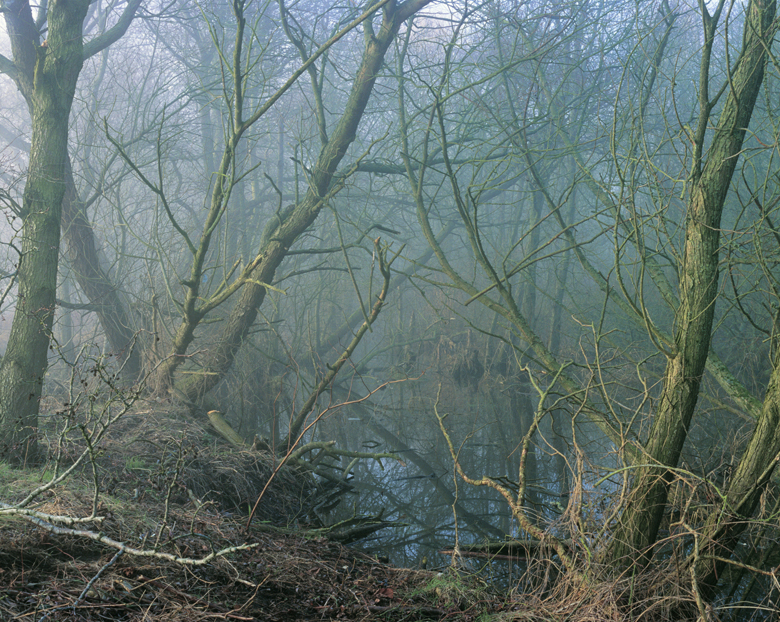|
June 15, 2013
Mary McIntyre says that her photographs often present spaces and places that have been forgotten and overlooked. The atmosphere of each location resonates from the image. With this in mind she depicts the transformation that occurs to these locations at specific times of day, when for a fleeting moment, the play of light can transform the mundane environment.
When photographed at night and artificially lit, these spaces begin to take on a cinematic quality, imbuing them with a heightened psychological charge.
 Mary McIntyre, Veil XVII (2008), colour lightjet photographic print
Mary McIntyre, Veil XVII (2008), colour lightjet photographic print
MacIntyre says that the Picturesque and Romantic movements in European landscape painting play an important role in her work. She is interested in making links between painting and photography, adopting the formal qualities of painting long associated with artists such as Jean-Baptiste Camille Corot and Jacob Van Ruisdael, to re-interpret them within a contemporary context.
She says that her work recognises that our ways of ‘seeing’ the landscape are conditioned through our knowledge of its historical depictions in painting and that both painting and photography not only portray but also construct ‘the landscape’. McIntyre’s landscape images do not seek to represent traditional rural idylls, instead they depict vistas that are in themselves constructed and man-made so that each scene is interrupted with evidence of urban activity.
The assumption underpinning this work is that photography has the status paintings have.
|
